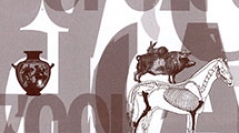

 Anthropozoologica
48 (2) - Pages 355-370
Anthropozoologica
48 (2) - Pages 355-370In this paper, zooarchaeological evidence from Roman Iron Age (c. 1-375 AD) inhumation graves with focus on the avian remains is presented. The material comprises both old and recently excavated material mainly from wealthy burial sites in eastern Denmark. Birds occur rarely as grave gifts in Danish inhumation graves. In total six graves provided bird remains with three holding parts of or entire goose (Anser anser) skeletons and three yielding domestic chicken (Gallus gallus domesticus). Both bird species were offered as food for the deceased as evidenced by cut marks and by the arrangements of the birds in pottery vessels or their location associated with other food offers like meaty portions of pig (Sus scrofa domesticus) and sheep (Ovis aries). Morphometric and contextual analyses indicated that the geese were domesticated geese. All graves with goose were princely graves, containing Roman imports and other animals offered, such as entire, but butchered lambs or pigs but also dogs (Canis familiaris). In two cases, the deceased were soldiers of a relatively high military rank within the cavalry. The geese therefore are considered to have had a dual function and were offered both for culinary and symbolic reasons as guards for the deceased. The domestic chicken occurred in a woman’s grave and in men’s graves and was considered, like the domestic goose, to have been relatively rare during the Danish Roman Iron Age's.
Goose, ndomestic chicken, wealthy inhumations, grave gifts, Roman Iron Age, eastern Denmark.